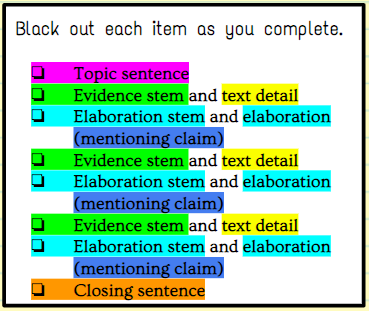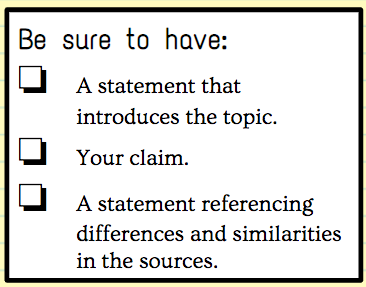Non-fiction in Middle School ELA: Using Research, Essay Writing, and Book Creation for Skill Focus
- Megan Mariano
- Jan 6, 2020
- 6 min read
Updated: Dec 29, 2021

As with most reading workshop units, my non-fiction unit is based all around REAL books chosen by students. With non-fiction, this can be tricky to navigate. Over the years, I've used Lucy Calkins units to guide my non-fiction instruction. As is with most of her work, it is not very straightforward and sometimes a bit too open-ended for my students. So, I've morphed her ideas and came up with my own major approach to teaching non-fiction reading and writing.
What Skills Should be Taught
The first thing every teacher should do is determine what skills they want to teach. Obviously, we all have standards to follow, but a lot of standards overlap.

For non-fiction, these are the major skills that should be taught in middle school:
Main idea and supporting details- Specifically crafting main idea statements and using these statements to make summaries.
Text structure- Identifying and writing using text structure.
Text features- Beyond identifying...determining their purpose and also creation of text features. This will help.
Author's purpose and opinion- What motivated the author to write this? What is his/her point-of-view of the topic?
Synthesizing- Using various sources about one topic and analyzing commonalities and differences.
Research- Finding and using appropriate research to prove a claim.
These should NOT be taught in isolation. Students should be reading authentic texts to learn these skills.
Step #1: Research

Depending on your grade level, research may look differently compared to others. I teach 6th, so I have my classes first choose a topic they'd like to research. I give them about 10 choices using a Google Form. From there, I group students based on common choices. This is for a group activity later on and allows students to meet and talk about their research.
After their topics are chosen, they request books from the public library on their topics. I give them very specific guidelines for book choice (less than 100 pages, juvenile or young adult non-fiction, expository not biography). I give them plenty of time to pick up their book(s) before beginning our unit. (See my post about this).
Then, they start their research in their books. Each day, I focus on a different skill from above and they need to use those non-fiction skills to guide their research. In my mini-lesson, I show how I use the skill with a mentor text. The pictures here show a sample student's digital notebook. These are a few pages.



Once they've done about a week or so of research in their texts, I provide them with articles on their topics. You may opt to have them find the articles themselves; I chose not to with my 6th graders because they get into that more in upper middle. For the articles, they focus on main idea statements and summarizing with lots of prompts.


They wrap up their research with provided videos on their topic, using main idea statements without prompts.
The very last component of their research is to see what topics all the sources have in common. What do all of them say about the topic? What are some major sub-topics they all touch upon?
This whole process takes about 2 and half weeks.
Step #2: Essay Writing
All of their research leads to this a research essay. Students are not just writing an essay about their topic...it is not an all about [topic]. This essay centers on an opinion on their topics. The students start with claim about their topic. I say to them, "you've just read and researched [topic]. What do you have to say about it?". This becomes their claim. It is not a fact, it is an opinion that can be proved with evidence from their research.
From there, students work on pulling research from their research notebooks that could support their thinking. So, they already have a lot of research... what do they have already that could support their claim?
Developing topic sentences for body paragraphs is next on the to-do list. The topic sentence is the core of the body paragraph. It sets the stage for what the paragraph is about. Students are provided with sentence frames to build their sentences. For this particular essay, each topic sentence focuses on a different source. Students are encouraged to include their claim and focus of the source within their topic sentence. Once they finish, I check the sentences before they can move on to the next step.

After approval, students transfer topic sentences over to a new slide and start gathering the final evidence they want to add to their essays. They find three pieces of text evidence to support their topic sentences, especially the claim. These details can be from research they gathered already, however, they do need to be quoting, so my students often have to go back into their sources for quotes. Throughout the research process, they are supposed to be tagging page numbers, so they should easily be able to grab a quote when going back to the research notebooks.
Once all evidence is gathered, students must explain their text evidence. This is super important in middle school and may be a shift from elementary. They must explain how the evidence they chose supports their claim. They do this by using digital sticky notes over each piece of evidence.

Students then spend time looking over my sample essay. Yes, I write an essay, too (see my blog post about that). It's a lot of work, but once it's done, it's done. I give them a key of highlights to focus on. They read through my essay with a partner and highlight specific aspects of the paragraphs. This helps them see how their essay is supposed to be written. From there, they start drafting their own body paragraphs with a given checklist.
I have them write their body paragraphs first, then I talk about their introductions and conclusions. In the past, I used to teach elaborate intros and conclusions. I've learned, though, that the less wordy these are the better. So I teach them a basic three-sentence format for them. When it comes to state testing, especially, those who grade the essays just want to get to the nitty-gritty. The first picture here are the colors I tell them to focus on in their body paragraphs. The other picture is how I tell them to set up their intros and conclusions.
This whole process takes about a week. I conference with students the entire time. We spend a bit of time on revision, mostly focusing on how to not be repetitive with their writing of claims.
I have another blog post that explains this in more detail!
Step #3: Digital eBook
All of this research and essay writing culminate in a group project. Students work in groups based on common topics. The ultimate goal is to create an informational book on Google Slides that looks like an expository text one would find in book stores! Students must create text features, headings, chapters, table of contents, and more.
They first spend time determining what topics they want to focus on in their books. They discuss common research they found. Once students come up with a decent list of topics, they put the topics under text structure categories with the goal of using that text structure when explaining the topic. I also have the students change the topics into chapter titles.

After they get all of the above organized, chapters are determined and students start gathering evidence that could fit into certain categories (mini-stories, quotes, statistics, etc.) with the intention of using the information in that chapter and to avoid just listing facts.


Then it's time to create! They go into Google Slides and we discuss some of the tech tools they can use to create their books. Students set up chapters, create diagrams and charts, add pictures, color, etc. and overall set it up like an expository informational text. These come out great and I always share them with the school and parents.



Bottom Line
This is a huge undertaking, but it so much more authentic to build a unit around non-fiction and research with one specific topic so students can hone skills. Going digital with this makes organization so much easier. The whole process takes about a month and a half in my 82 minute classes (factoring in our daily reading and grammar/vocabulary.)
Interested in this unit? Click below!
A super mini-version of this is available in my store as well for Martin Luther King Jr. Day!
************
Want a CUSTOM BUNDLE from me? Click below!
Follow me:












